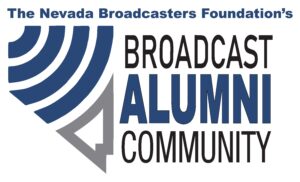
Here are some of the regulatory developments of significance to broadcasters from the last week, with links to where you can go to find more information as to how these actions may affect your operations.
- Following up on its proposals from last summer to clean up radio technical rules that were inconsistent, outdated, or inaccurate, the FCC adopted an order implementing all but one of the proposed changes. The changes eliminate the rule on the maximum rated power of AM transmitters, finding it no longer needed as long as a station operates within its authorized power limits. This change is expected to increase the availability of used transmitters for AM stations, as a station can buy any class of transmitter to achieve its authorized power rather than being limited to buying transmitters that correspond to specific AM power levels. The rule changes that were adopted also clarify city-coverage requirements for NCE FM stations, lessen second-adjacent channel interference protections to Class D NCE FM stations, and update some FM spacing requirements in border areas to conform to Mexican and Canadian treaty obligations. The Commission declined to adopt one proposed change that would have eliminated a rule that requires any application that proposes to locate a new FM antenna within 60 meters of an existing FM or a TV station to show how its operation would affect existing operators. While seldom used, commenting parties argued (and the Commission agreed), that retaining the rule reinforced the policy that “newcomers” to a transmitter site are responsible for resolving interference complaints to existing stations. (Report and Order)
- The NAB filed with the FCC a comprehensive “ex parte” statement in connection with the FCC’s Quadrennial Review of its ownership rules. In a 56-page letter, with additional attachments, the NAB set out in detail why it believed that parties that opposed ownership relaxation – principally for the radio industry – were wrong on the law and the facts – citing all the record evidence that showed that relaxation of the local ownership rules is necessary to allow radio to compete with the digital media companies that now unquestioningly compete with both radio and TV for audience and advertising dollars (Ex Parte Statement). The FCC is supposed to complete the current Quadrennial Review begun in late 2018 and begin its next Quadrennial review of ownership rules at some point this year. See our article here for more on this review.
- More stations – commercial and noncommercial – signed consent decrees with the FCC over online public file violations. Be sure that you are staying on top of your public file obligations whenever they arise, and especially when it is time for renewal of your license. Examples of the recent consent decrees are here and here.
- One station was ordered to pay $1,500 and another station faces a similar fine for failing to file license renewal applications on time—one filing was made about six weeks late and one filing was made right before the station’s license was set to expire. Make sure you stay on top of the deadlines for your regulatory filings to avoid such issues. (Forfeiture Order and Notice of Apparent Liability for Forfeiture)
- Satellite TV provider DISH Network and TV station group TEGNA settled their long-running retransmission consent dispute. Both companies had accused the other of failing to negotiate in good faith for retransmission consent as required by the FCC’s rules. The FCC dismissed the complaints once the dispute was resolved by the parties. (Order)
- We posted on our Broadcast Law Blog two articles on recent industry events:
- The first article, here, noted that, in certain markets, controversial ads from political candidates ran during last week’s Super Bowl. The article looked at why broadcasters had to run those ads despite their controversial content, as the “no censorship” provision of Section 315 of the Communications Act forbids stations from editing a candidate ad (with some very limited exceptions).
- The other article was the second part of our series looking at the music royalty issues surrounding the disputes about Joe Rogan’s podcast on Spotify. In Part 2, we looked at how music rights and royalties impact decisions like those of Neil Young and other musicians who wanted to pull their music to support the protest over Rogan’s podcast. See the post, here.
Courtesy Broadcast Law Blog


